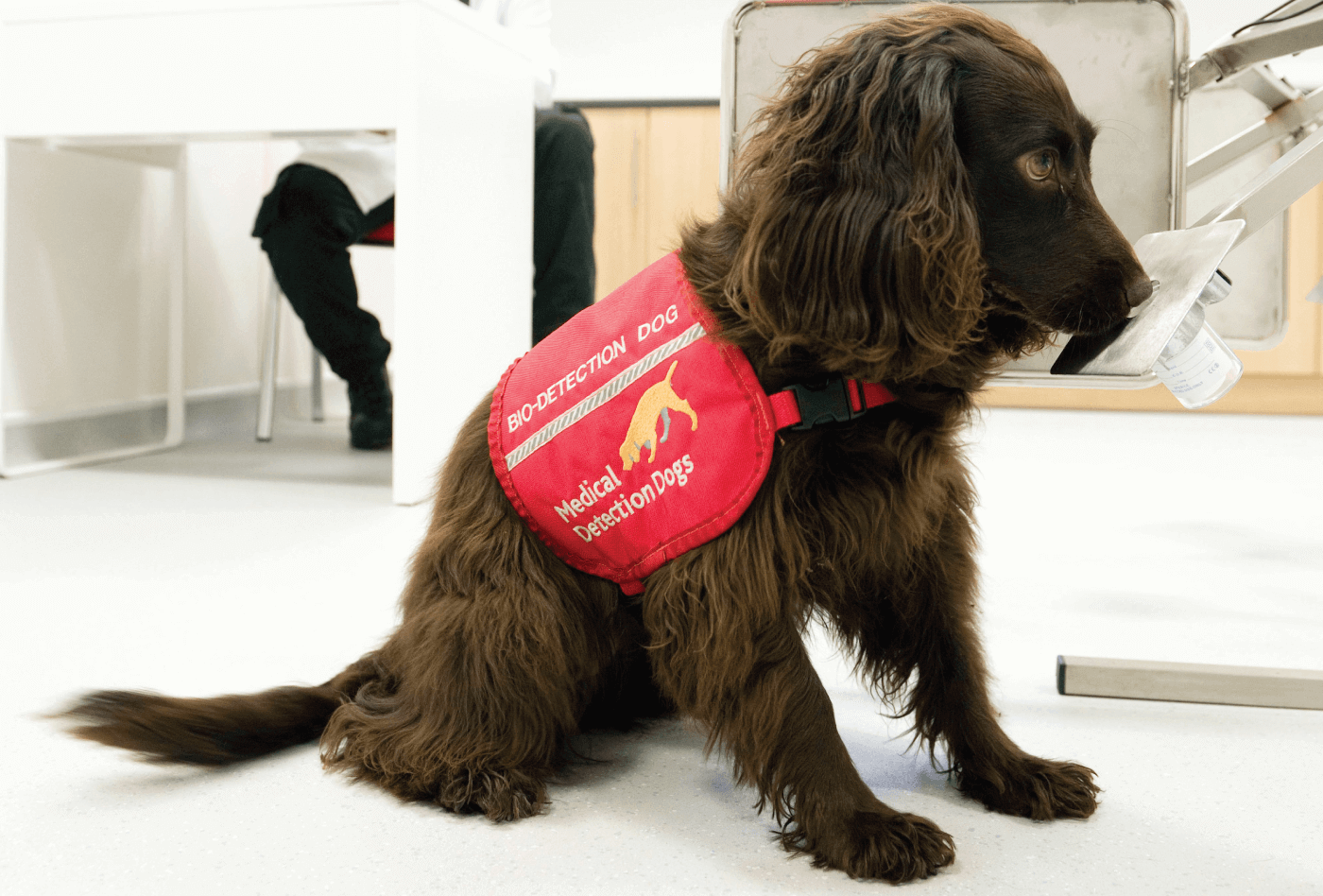
Though prostate cancer is the second-highest cause of cancer death in men, early biomarker detection methods – specifically, the prostate-specific antigen screening test – lack sensitivity and specificity. We need to reduce false positives and false negatives – but how? The answer may lie in our four-legged friends. Trained canines have been shown to reliably detect and diagnose cancer by smell. Granted, dogs in the lab would be a logistical nightmare and not feasible for mass testing – but that’s where researchers at Massachusetts Institute of Technology (MIT) come in.
Using urine samples from patients with or without prostate cancer (confirmed by biopsy), they tested whether the cancer could be detected by trained sniffer dogs, molecular volatile organic compound (VOC) analysis by gas chromatography-mass spectroscopy (GC-MS), or microbiota profiling (1). Canine olfaction reliably distinguished between prostate cancer samples and biopsy-negative controls, whereas VOC and microbiota detected qualitative differences between the groups.
From this, the team trained an artificial neural network to mimic canine olfactory diagnosis – distinguishing between biopsy-positive and biopsy-negative samples based on the GC-MS data both alone and combined with canine olfaction data. “We knew that the sensors are already better than what the dogs can do in terms of the limit of detection, but what we haven’t shown before is that we can train an artificial intelligence to mimic the dogs,” said Andreas Mershin, a research scientist at MIT and author on the study (2). “And now we’ve shown that we can do this – we’ve shown that what the dog does can be replicated to a certain extent.”
This multiparametric approach lays the groundwork for the development of machine-based diagnostic tools that mimic canine olfaction – and, given the dogs’ keen sense of smell, it has the potential to improve diagnostic efficacy in a field where unreliable results run rampant.
References
- C Guest et al., PLoS One, 16, e0245530 (2021). PMID: 33596212.
- MIT News (2021). Available at: http://bit.ly/307Yl0K.




